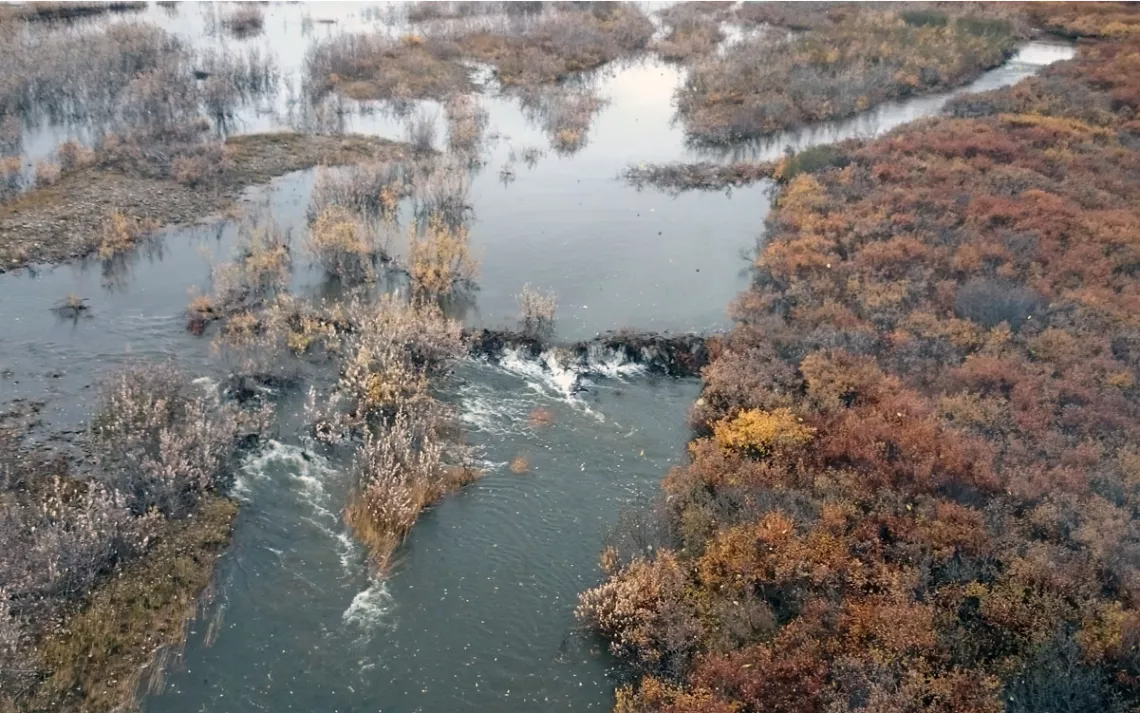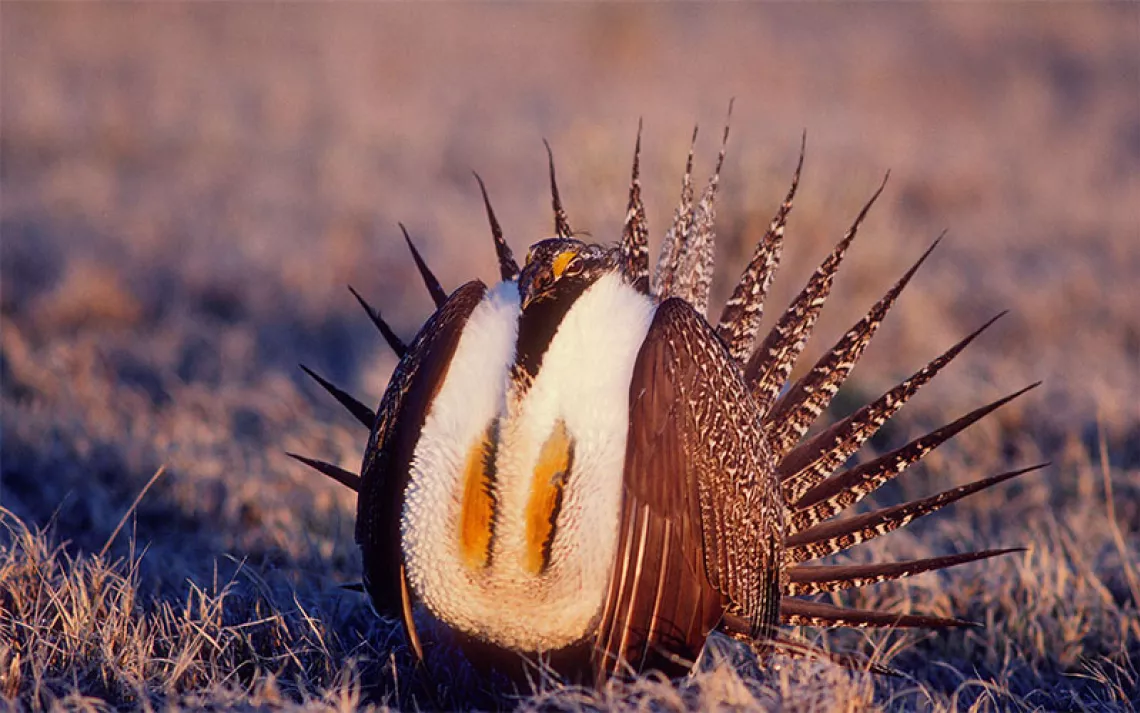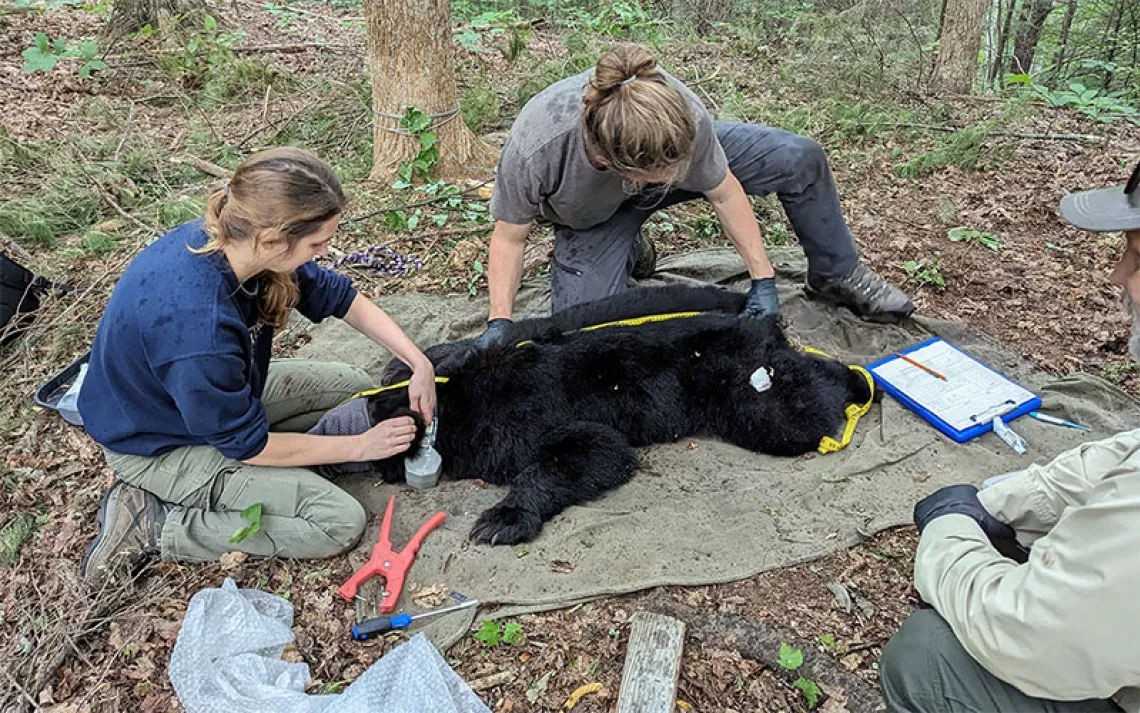Say Hi to the Beavers of the Tundra
Climate change opens up new real estate for the industrious semiaquatic rodents

Beaver dam on the Babbage River | Courtesy of J Frandsen and Parks Canada
A little over a year ago, Tom Jung, a wildlife biologist with the Yukon Department of Environment, noticed something odd. He was flying in a helicopter over the Beaufort Coastal Plain, an expanse of windswept tundra between the Brooks Range and the Arctic Ocean, with a group of colleagues surveying gyrfalcons and peregrine falcons.
“I had to do a double take,” says Jung. “Sometimes in a wildlife survey, if you don’t see much for a while, you might get a bit googly-eyed.” But it was a beaver dam, on the Babbage River, right where it wasn’t supposed to be.
Beavers are fairly common in the boreal forests of North America and Canada. But because they rely on wood for food and shelter, treeless tundra habitat isn’t somewhere you’d expect to run across one. Jung had never seen one in the area before, nor had any of the other scientists he was with. When he returned from the trip, he learned that local Inuvialuit hunters had spotted dams and lodges on other rivers nearby in 2008 and 2009. Together, these sightings make up the first-ever record of beavers in the region, as Jung described in a recently published note in the journal Canadian Field-Naturalist.
So why are beavers moving into tundra real estate? Shrubification. As climate change warms the tundra, more and more woody plant species are springing up in an ecosystem that has been historically dominated by sedge, moss, and herbs. Streams and wetlands once devoid of beaver food have become a buffet of willow, birch, and alder.
It must have taken adventurous beavers to reach the Beaufort Coastal Plain, however. To get there, they would have had to either cross a mountain range or swim a segment of the Arctic Ocean. Jung favors the mountain theory, but for now, there’s no way to know. Satellite imagery shows an almost continuous path through the mountains via freshwater, but salt water isn’t a barrier to a determined beaver.
The presence of beavers is more than just a novelty. Beavers are what ecologists call a keystone species, able to reshape entire ecosystems through their dam building. “Beavers alter streams and the surrounding vegetation—an effect that cascades in all directions. They will provide another food source for Arctic predators and will change stream ecosystems in concert with the climate-induced changes,” says Kent Woodruff, a beaver expert with the U.S. Forest Service. “Fish distribution will respond, and other wildlife and plant species will shift as well.” When a beaver dam turns a fast-flowing stream into a marshy pond, everything from sedges to songbirds are affected.
It isn’t just beaver—other boreal forest species like moose and snowshoe hare have also been pushing into the tundra in recent decades, in response to the same changes. Jung is keeping an open mind, though. Maybe, he hopes, hungry beavers will actually act as a natural control on the growth of shrubs in the tundra, helping slow ecosystem shifts instead of speeding them up.
“Really, only time will tell,” he says.
 The Magazine of The Sierra Club
The Magazine of The Sierra Club



